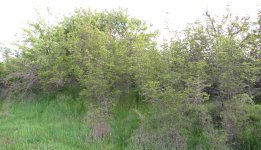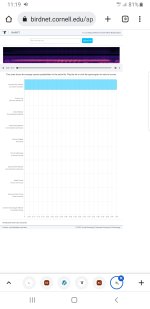I'd be inclined to trust the two people who identified the bird for you on XC because of how experienced they are with bird sounds. While I don't consider myself fit to confirm the ID myself by ear, I suspect other people who do may be biased to first consider Grasshopper Warbler (instead of River Warbler) not because it's so hard to separate this species pair, but because Grasshopper Warbler would be the default cricketlike warbler in much of Europe (except for Savi's Warbler in some areas, which has a much faster pulse rate and much lower frequency). Have a look at River Warbler's range to see why.
Also, if I were you, I'd switch to recording in the lossless .wav format instead of .mp3. Here's my recording of a River Warbler identified as such by BirdNET (the benefits of .wav's), from last year. As you can see, the thickest part of the reeling falls between 4 kHz and 8 kHz, just as in your recording, which excludes Savi's Warbler. Let's have a look at the pulse rate: the Sound Approach has it at 10 per second, in my recording it's about 16.4 per second, and in your recording it's sbout 15.25 per second. Common Grasshopper Warbler has 24 per second in the Sound Approach, and analysing a few sonograms of XC recordings seems to confirm just that.
https://www.researchgate.net/public...bler_Locustella_fluviatilis_in_eastern_Poland, which has a great visualisation of RW and GHW songs side by side, has it at 9.5-16.5 per second for River Warbler and 22.5-25 per second for Grasshopper Warbler.
There's also Lanceolated Warbler, which is only present in Finland and further east; a quick and dirty look at the sonograms of this one appears to show it having a slightly different core frequency range to River Warbler, but this impression may be inaccurate, and Lanceolated Warbler is out of range by a long shot anyway. I hope someone with more direct knowledge of Lanceolated Warbler could chip in.
One more thing, I wouldn't hope for visual contact with any of the above unless you have much luck or are prepared to chase the bird and trample its habitat/scare other animals/get a bunch of ticks (in the non-birding sense).






